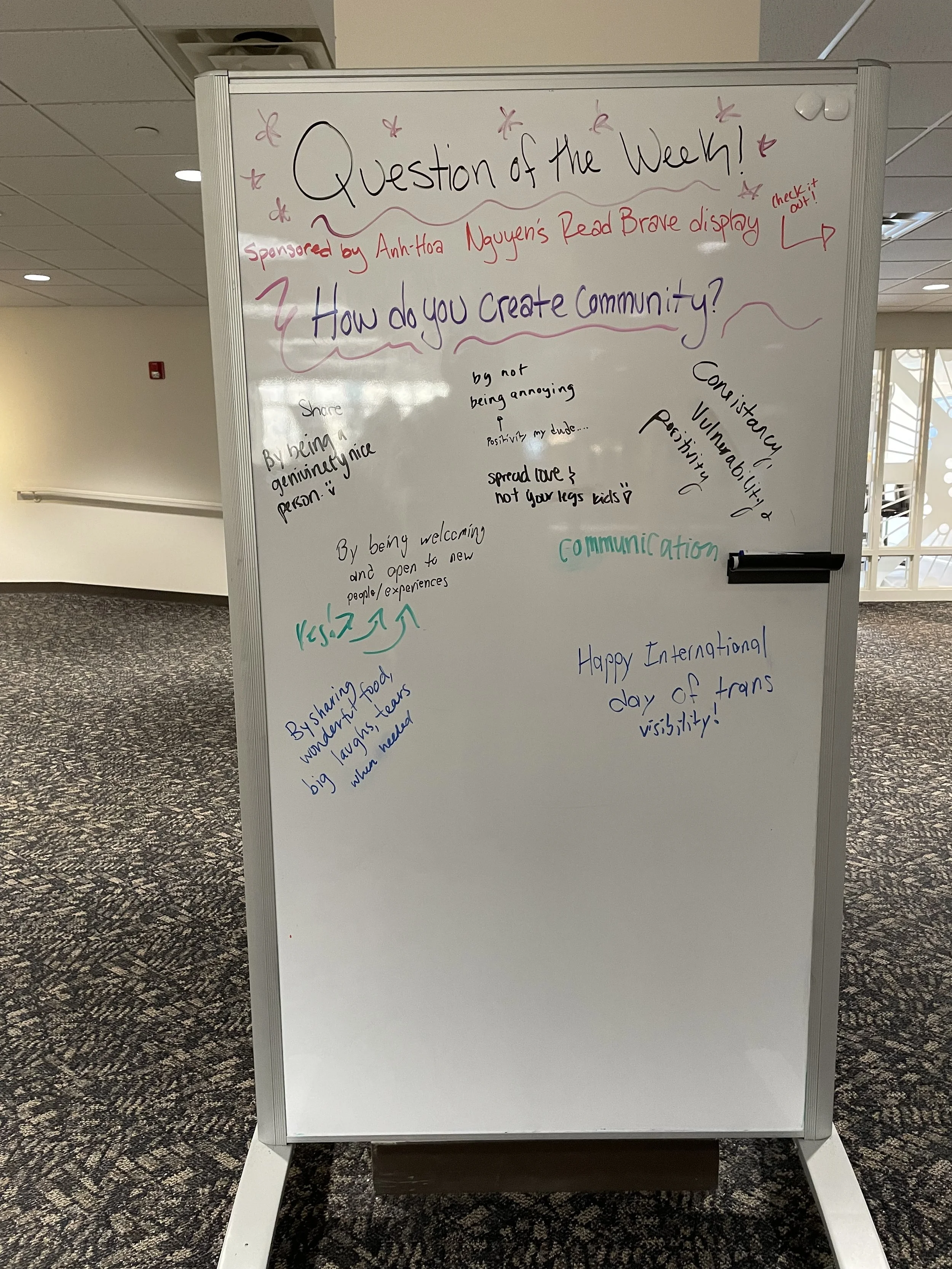Read Brave
Creating a Community of Care
For the last month, St. Kate’s has been the co-host of the Saint Paul Public Library’s annual Read Brave event. You may have noticed the satellite information site located in our library to the right of the entrance doors. In addition to information about the event which was brought about by artist-in-residence and Administrative Assistant of the Humanities Department, Anh-Hoa Ti Nguyen, there were flowers, snacks, and candy, in the library as well. Read ahead to learn more about this inspiring event.
The Read Brave event flier, in case you missed it
Read Brave is an annual event hosted primarily by Saint Paul Public Libraries. It began in 2013 with the intention to bring about brave conversations inspired by carefully selected books. The tradition since then has continued with a different theme each year. This time it was Community Care, which was explored through literature and the artist’s installation. The big question? What does it mean to create and be a community of care? Past themes centered around the housing crisis, climate change, and owning personal stories.
Each year there are three parts to the Read Brave event. The first step is to read: read the books and engage with what they are saying and or asking of you. Second, talk. Ask your questions at a curated panel or in a book club or personal group (the library also creates questions for each book to inspire your conversations). Finally, act. Usually this comes by way of the art installation and an event that is inspired around this.
This year’s theme featured five books: “The Magic Fish,” a YA story about the struggle and bravery behind coming out; “What We Hunger For: Refugee and Immigrant Stories About Food and Family,” an essay collection pondering what it means to hold ethnic food traditions in America; “Maya and the Robot,” “Planet Omar: Accident Trouble Magnet,” and “Thank You, Omu!” which were children's chapter and picture books. The books were selected to ask questions about what it means to create a community across differences. The very fact that all the books are meant for different ages indicated that the curators wanted an intergenerational conversation, one in which all people can share their wisdom.
One of this year’s highlighted books
Once you have read the books and talked with friends and family, Read Brave inspires you to act. This is where Nguyen’s art installation comes into play. Partly inspired by the Sisters of St. Joseph’s mission to love thy neighbor without distinction, Nguyen sought to create a platform for people to connect and create community over food.
“[My job was] to create programming that would engage the community in the themes of the year,” said Nguyen. She proposed a recipe collection where people would fill out a Google Form and she would make that into a recipe handout for others. “I really wanted to figure out a way that our community would connect with each other after Covid… food is a really inviting… way to do that,” she said.
Once community members completed the form, they would go to their library where one of these art installations was and pick up a recipe. If someone had not shared a recipe, there was a QR code for which they could. In addition to this, the recipes were made accessible online so that if someone was nervous to come to the library for any reason, they could still participate in the community. The recipes are still able to be viewed here. The different recipes range from “Pear Pie” to “How To Parent Teenagers” to “Saying I Love You Without Saying I Love You.” The artist took what she knew, that food is a source of connection, and made a platform for people in our community to connect to each other.
St. Kate’s students discuss what “community” means
As noted above, St. Kate’s co-hosted a panel event in which the authors of “What We Hunger For” spoke about their experiences with food (Nguyen was the facilitator and also one of the essayists). Panelists shared their unique love of food with details like what it smelled like, felt like and how their ethnic food is embedded deep within them. Food was intimately tied to their identity, which caused audience members to think… What food is tied to our identity?
While this may seem to be just an off-campus event, our library question of the week for the last month has been about community and care. We all show care and community differently, but I think that at some level we all long for it. Even if you didn’t see or participate in the Read Brave event, I hope you are inspired to create or find your own community. Ask brave questions, care for people, and even though it's scary, put yourself out there!









